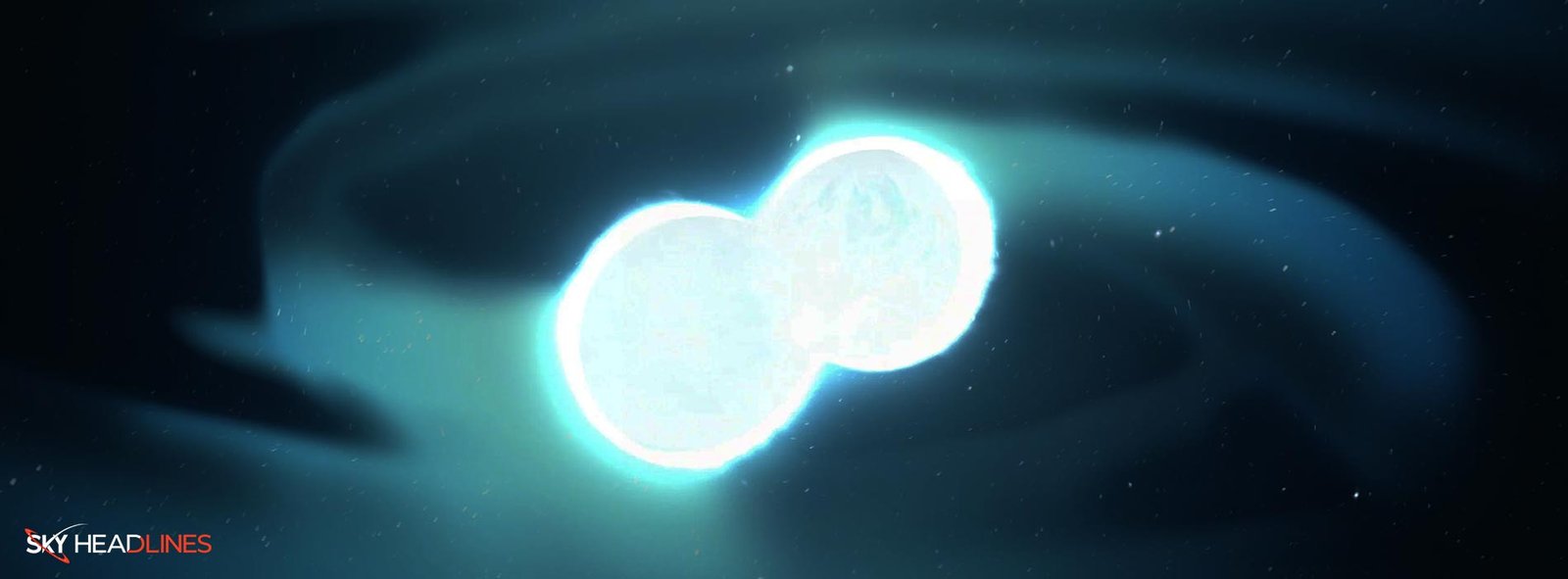Astronomers used the James Webb Space Telescope (JWST), a tool that observed the Stars collision, to find the cause of an incredibly bright burst of gamma rays. This burst happened when two neutron stars collided with each other.
Most likely, the atoms in your ring came from “kilonovas,” when neutron Stars collision occurs into each other. That’s because kilonovas are thought to be where the Universe’s most vital elements are made, which can’t be made in the nuclear reactors at the center of stars. They also send out long-lasting GRBs.
How are the most vital elements of the Universe made via Star’s Collision?
The “neutron capture” or “r-process” is thought to make these elements, like gold, platinum, and uranium. This process lets atomic atoms grab neutrons, creating new, more prominent elements like gold, platinum, and uranium. The r-process can only happen when things are extreme and violent, like when a neutron Star collision occurs.
This is the first time that JWST has been used to find signals from an event like this Stars collision, and the powerful space camera was also able to find the signature of heavy elements being made in the explosion. In particular, the team saw proof of the rich element tellurium and the formation of lanthanides, a group of 15 heavier metals than lead.
The team wrote a paper about the results of the Stars collision,
“These observations show that nucleosynthesis in GRBs can make r-process elements with a wide range of atomic masses and play a central role in heavy element nucleosynthesis throughout the universe.”
The GRB that Andrew Levan, a professor at Radboud University in the Netherlands, and his team used to find the source of the kilonova for Stars collision is also fascinating. It was first seen by NASA’s Fermi Gamma-ray Space Telescope on March 7, 2023, and was named GRB 230307A. It is the second-biggest GRB ever seen.
Astronomers could figure out where the GRB came from because it lasted about 34 seconds and was seen by more than one camera. The Columbia University team member Brian Metzger talked about the accomplishment in several tweets on Thursday, July 6.
Metzger wrote,
“In a project led by Andrew Levan, we used JWST to find (for the first time!) kilonova emission after a GRB.”
“In what might be the biggest story twist, the GRB, which was the second brightest of all time, lasted for half a minute, meaning that it was a second “long” burst that happened simultaneously as r-process generation. Likely a neutron star merger, but one which questions our ideas about how long the central engine should ‘jet.'”
JWST looked at the kilonova twice. The first time was 29 days after the GRB, and the second time was 61 days after the blast of radiation of Stars collision. Between these two looks, the kilonova’s light dropped quickly and went from blue to red.
Stars Collision- Deatils of Bright Galaxies Near Kilonova
The team found a few bright galaxies near the kilonova. These galaxies could be where this Stars collision happened, making them the cause of GRB 230307A. The one they like best is the brightest of these galaxies. It is about 8.3 million light-years from Earth and about 130,000 light-years away from the GRB source.
The kilonova could have given off something other than light that could have been seen. Gravitational waves are made when neutron Stars collision with each other occurs—these waves “ring” the fabric of space and time. On Earth, instruments like the Laser Interferometer Gravitational-Wave Observatory (LIGO) can pick up on these ripples, but LIGO wasn’t running when GRB 230307A went off. The building was in the middle of a three-year shutdown at that time. It was being updated to make it safer and wouldn’t return online until May 2023.
The team’s finding about the event of Stars collision is still in its early stages and is going through peer review before being published in a magazine. The paper’s first draft, which may need to be changed, is posted on the research site arXiv.





